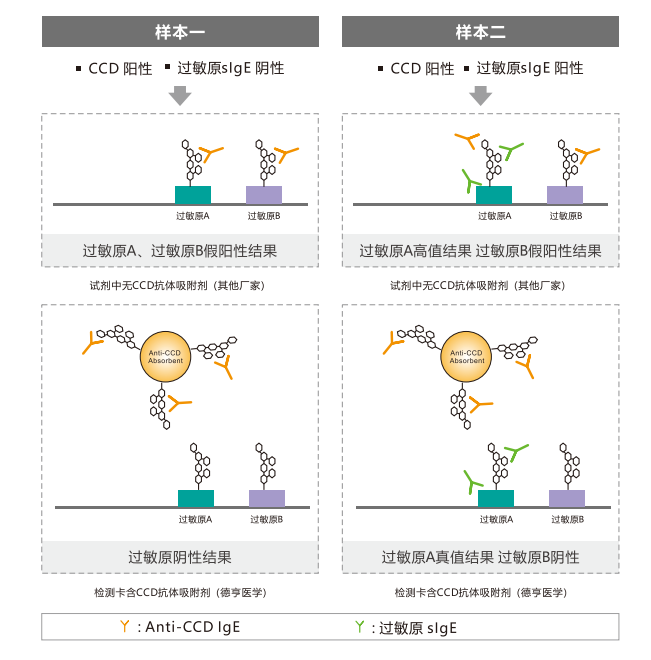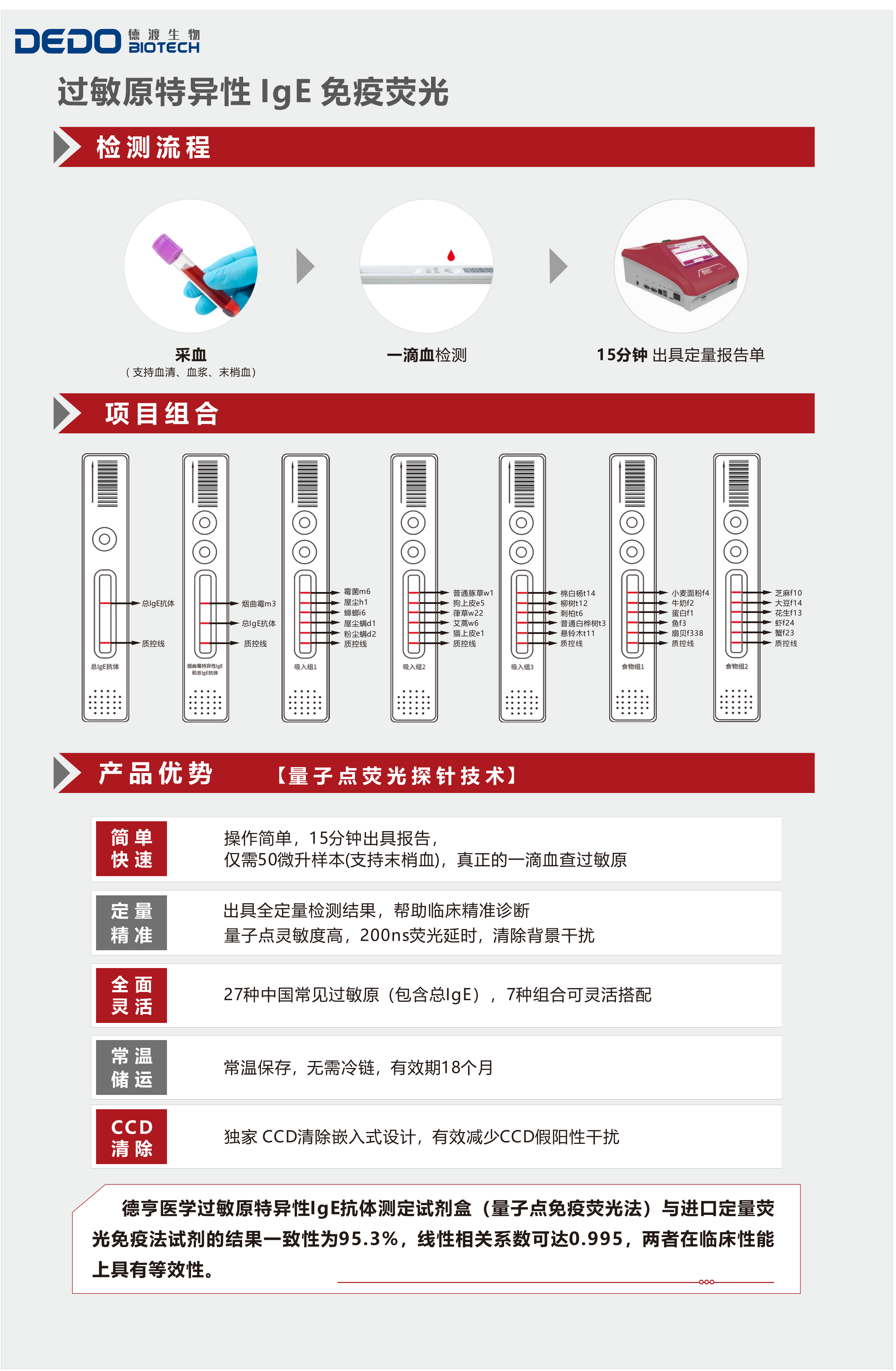Allergic diseases are one of the health issues that have attracted global attention. According to a report in the White Paper of the World Organization for Allergy (WAO), 30% to 40% of the world's population is troubled by allergic problems, and allergic diseases have become the sixth largest disease in the world.
The occurrence of the above situation is highly likely to be caused by the following reasons:
CCD
The allergen test results caused by false positives.
1、 What is CCD?
CCD (Cross reactive carbohydrate determinants) is a type of carbohydrate group widely present in animal and plant glycoproteins, which can induce the production of Anti CCD IgE in the body. Anti CCD IgE does not cause allergic reactions, but can be detected in over 20% of allergic patients, resulting in false positive test results. Therefore, if CCD-sIgE components can be identified or even removed in clinical practice, it will bring a qualitative leap in the diagnosis of allergic diseases.
2、 How to remove Anti CCD IgE components from samples and improve the accuracy of IgE in vitro diagnostic tests?
Adding CCD antibody adsorbent to the reagent can eliminate the influence of Anti CCD IgE in the sample, reduce the risk of CCD interference in the quantitative detection process of sIgE, and significantly improve the specificity of the detection results.
This preprocessing method is simple and practical, and the entire process does not require pre incubation, without changing the sample size and experimental steps used in the experiment.
3、 CCD clearing embedded design can improve the diagnostic accuracy of pollen and food allergies
International authoritative academic institutions and organizations have pointed out the importance of using CCD antibody adsorbents in allergen detection.
The WAO-ARIA-GA2LEN Consensus: The 2020 updated version of molecular diagnosis of allergies states that CCD antibody adsorbents can reduce cross sensitization that is not clinically relevant and directly display primary sensitization information.
WAO Opinion: In IgE allergy diagnosis and other allergy related experiments, it is suggested to introduce CCD antibody adsorbents in sample diluents to reduce CCD cross reactivity.
Professor Zhu Rongfei from the Allergy Department of Tongji Hospital, Affiliated to Tongji Medical College, Huazhong University of Science and Technology, published in the internationally renowned medical journal Journal of Asthma and Allergy in May this year, stating that in experiments without CCD antibody adsorbents, the IgE test results of most food allergy patients showed that patients were allergic to both pollen and food.
In the IgE detection experiment using antigen determining cluster CCD clearance technology, the IgE detection results of most food allergy patients showed that the number of patients who were allergic to both pollen and food decreased by nearly 50%.
The detection card is pre coated with CCD antibody adsorbent, which can eliminate the influence of AntioCCDIgE in the sample, reduce the risk of CCD interference in the quantitative detection process of SLgE, and significantly improve the specificity of the detection results.

Deheng Medical Allergen Specific IgE Antibody Assay (Quantum Dot Immunofluorescence Method)



